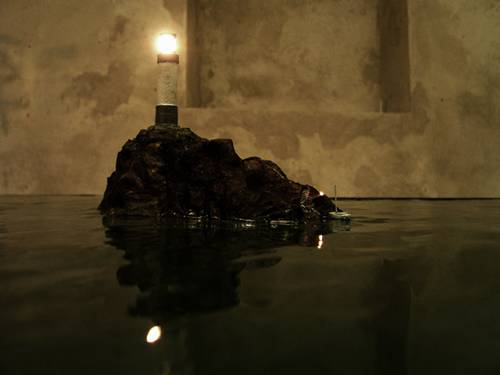JOHAN THURFJELL

It is at the more fragile moments in life one has to “reach out and touch faith;” when something is lost or something is missing, after a failure or (sometimes even worse) after a major success and one has to somehow leave for the next level but don’t know how to. What is to be found if one reaches out, just around the corner, above the clouds or beyond our wildest dreams and fantasies?
In Untitled (2004) at the Espresso bar in Moderna Museet, Stockholm, he transformed the cork board behind the counter, where usually the prices for coffee etc. are displayed, to what seems to be a personal message to a loved and lost one. The narrative tells us about someone desperately trying to forget and move on, but seems unable to “just stop loving.” One can read another message intertwined in the text that is highlighted with another colour and is read from the top and down, instead of from the left to the right, and says something like this “I will always love you, and that is something I hold on to now that I am letting go [of you].”
Thurfjell, the storyteller, performs a balancing act on a tight rope when exposing some of his own fears and romantic ideas in his art. The narrative structures that crosses each other in intricate ways, and in innovative combinations, provides so much more than romanticism to his work though, and it is definitely easy to get lost when exploring it.
Power Ekroth
